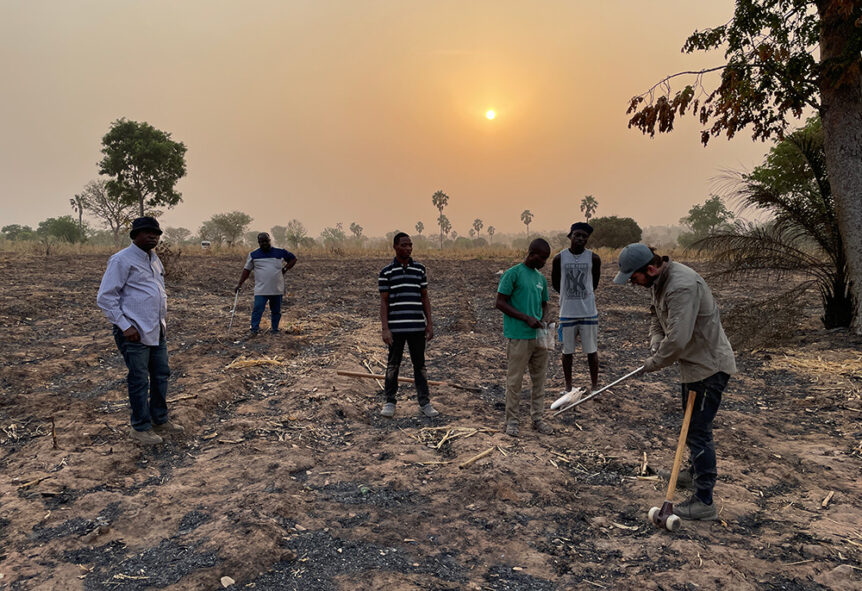Ghana’s landscapes tell a story of change. As we traveled across the country between January and February 2025, from the dry expanses of the Guinea Savanna to the dynamic Transitional Zone and the rich Coastal Savanna, we witnessed firsthand how land-use is evolving. Population growth, agriculture, and urbanization are reshaping ecosystems, leaving visible marks on the soil and the people who depend on it. Our mission? To collect soil samples that will help us better understand these changes and their impact on soil health.
Our journey took us through seven distinct land-use systems in the three agroecological zones: arable land (maize, cassava), open grasslands, mango orchards and four types of secondary forests (neem tree, teak, palm oil plantations and an abandoned orange orchard). Each site revealed its own unique story. In some areas, intensive farming was visibly taking its toll on soil structure, while in others, the resilience of natural ecosystems provided hope for sustainable land management. The contrasting landscapes sparked conversations with local farmers, who shared their experiences of soil degradation, fertility loss, and the challenges of balancing productivity with sustainability.

Digging deeper: What we collected and what we analyze
We collected a total of 15 kg of soil samples from a landscape transect, sampling at depths of 0–15 cm and 15–30 cm. Our soil corers endured the harsh conditions, requiring welding twice before finally being retired for good. Meanwhile, our soil auger braved approximately 500 impacts into the ground, a true testament to its resilience. In the coming months, the soil samples will undergo detailed analysis to assess:
- Soil pH and electrical conductivity – Clues about chemical balance and fertility.
- Total nutrient stocks – Looking at key elements like carbon, nitrogen, phosphorus, and essential minerals.
- Cation exchange capacity (CEC) – Indicating soil’s ability to retain nutrients for plant growth.
- Microbial biomass carbon and nitrogen – A window into the soil’s biological health.
- Potential enzyme activities – Examining nutrient cycling and organic matter breakdown.
- Heterotrophic respiration – Measuring microbial decomposition processes.
- Soil aggregate stability – Assessing resistance to erosion and structural integrity.



What comes next?
The samples we collected will be analyzed as part of an ongoing Master’s thesis within the ‘SustInAfrica’ project. The results will help us understand the severity of soil degradation and the potential for sustainable land-use practices.
Exploring Ghana’s soils was more than just a scientific mission; it was an adventure through diverse ecosystems and agricultural landscapes, each with its own challenges and possibilities. Keep following our updates for insights into the science behind these landscapes and what it means for the future of sustainable land management in Ghana’s diverse land use systems.

